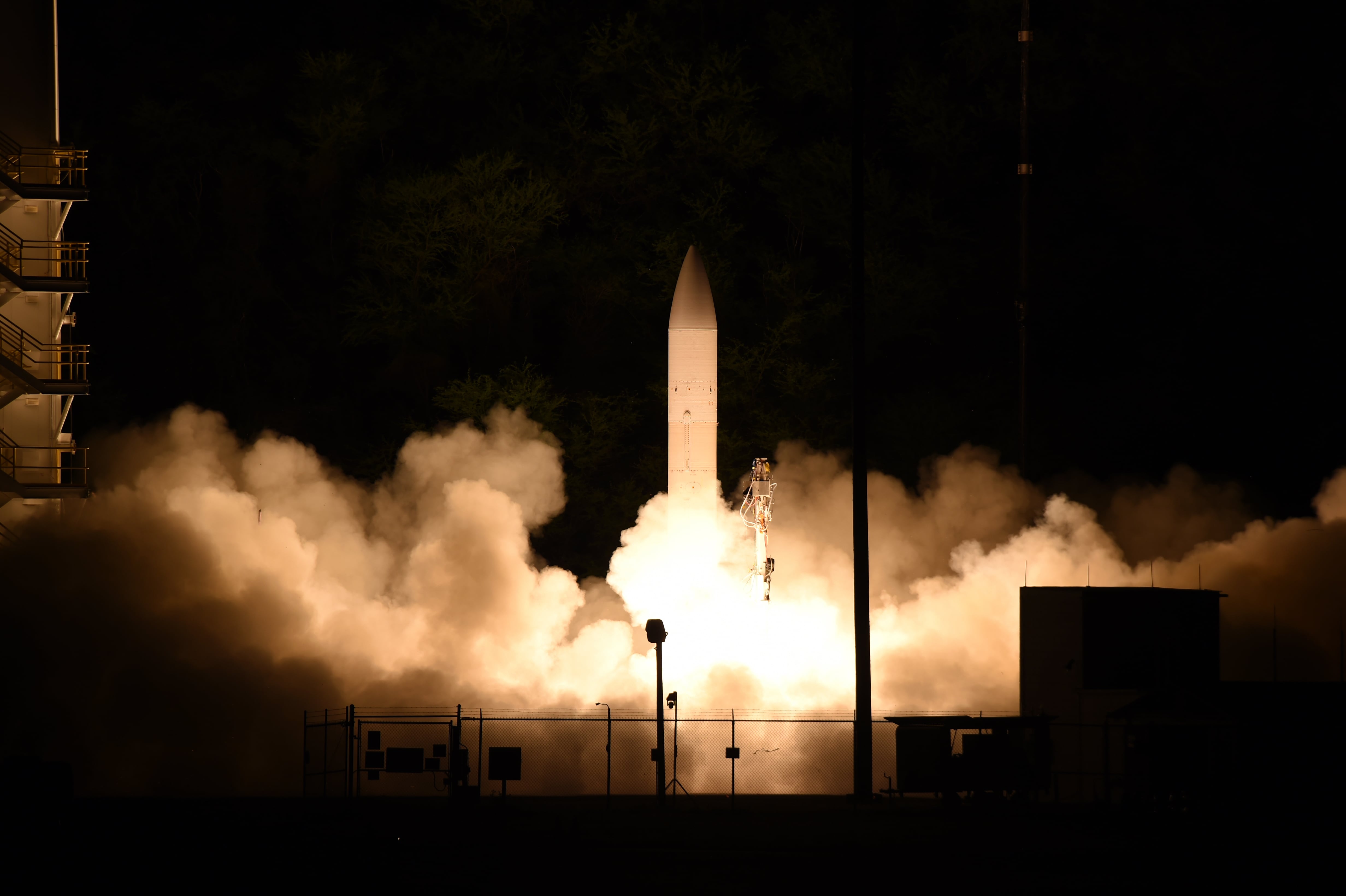The days of the so-called nuclear priesthood are numbered, not just because of the type of outdated policy primacy and elitism it suggests, but because future nuclear policy cannot survive and thrive in a sequestered existence apart from the push and pull of other strategic security challenges.
U.S. nuclear policy has traditionally been siloed off from the policy development processes for a host of other capabilities and domains — space, cyber, artificial intelligence and missile defense, to name a few.
The nuclear arsenal is unique in its independent focus and separate government organizational structures, including a combatant command devoted to U.S. nuclear capabilities, plans and personnel and, since at least the Clinton administration, an independent and fairly insulated national policy review process referred to as the Nuclear Posture Review.
Indeed, nuclear policy — including force posture, modernization, launch authority and arms control — has largely developed independently of other defense policy communities.
This has to change.
New technologies and capabilities — including hypersonic missiles, artificial intelligence, asymmetric counterspace capabilities and cyberthreats — are increasingly capable of impacting strategic interests and affecting nuclear stability, and the firewalls between capabilities, plans and organizations for conventional operations and those dedicated to nuclear deterrence are already eroding.
The commingling of conventional and nuclear payloads on non-ballistic missile systems, the dual-use nature of situational awareness capabilities, and increasingly effective missile defense systems are blurring the threshold between conventional and nuclear conflict. Policymakers must now grapple with conventional-nuclear integration, cross-domain arms control proposals, and the possibility that escalation could occur rapidly and in nonlinear ways.
These challenges require an analytical approach that examines points of intersection between nuclear issues and other areas of defense policy — an examination of international security at the “nuclear nexus.” The Center for Strategic and International Studies’ new series aims to do just that. More than ever, many of the most significant strategic national security challenges cut across these complex issues, domains and risks, defying traditional analytical and organizational stovepipes.
For example, managing complex escalation dynamics under a nuclear shadow requires deliberate consideration of how conventional operations could impact adversary perceptions and the likelihood that they choose nuclear escalation. Responsible conventional-nuclear integration, or CNI, can raise the nuclear threshold, but it first requires a more uniform understanding of what it entails. A prudent first step would be taking stock of the current state of CNI in doctrine, concepts and exercises, as well as in Department of Defense organizations, to illuminate areas for greater integration.
Consider also the case of nuclear command and control, or NC3. Today, operating and defending the integrity of our NC3 systems requires collaboration across the Department of Defense, between U.S. Strategic Command, U.S. Cyber Command and U.S. Space Command. Research has shown that organizational stovepipes are likely to lead to competition for resources and authority. But is the semiautonomous operation of these institutions also impeding their shared mission of defending NC3?
Effective risk mitigation requires the DoD to manage competition and ensure that separate institutions are developing interoperable technologies. Developing cross-domain concepts of operation — with clearly specified roles for the combatant commands involved in NC3′s operations — and collaboration in the management of passive space and cyber defense capabilities within nuclear institutions could help. But this only works if we are prepared to climb across siloes and embrace shared responsibilities.
RELATED

Escalation management in today’s security environment also calls for attention to how new capabilities will affect traditional concepts of deterrence and stability. New hypersonic weapons, for example, present unique challenges to the status quo military balance.
But just like past instances of technology-induced strategic disruption, from the strategic bomber in the 1930s to the intercontinental ballistic missile in the mid-20th century, countries can adapt to the hypersonic era. Improving detection and tracking systems, as well as active and passive missile defenses, may help mitigate the destabilizing aspects of aerial hypersonic weapons, taking lessons from U.S. efforts to adapt to new capabilities during the Cold War. Creative, cross-domain arms control and confidence-building measures could be an important part of the solution as well.
Regardless, the days of a siloed nuclear posture review independent of all the other strategic security risks at play should come to an end. We need to more seriously consider proposals for a new approach — one that integrates decisions about nuclear policy within the broader U.S. defense strategy.
Ultimately, greater engagement between the nuclear and non-nuclear defense policy communities will be central to managing our new, contemporary security environment. Rapid technological innovation, cross-domain competition and a looming nuclear shadow require examining international security at the nuclear nexus.
Rebecca K.C. Hersman is director of the Project on Nuclear Issues and senior adviser with the International Security Program at the Center for Strategic and International Studies, where Maxwell Simon is a program coordinator and research assistant.








